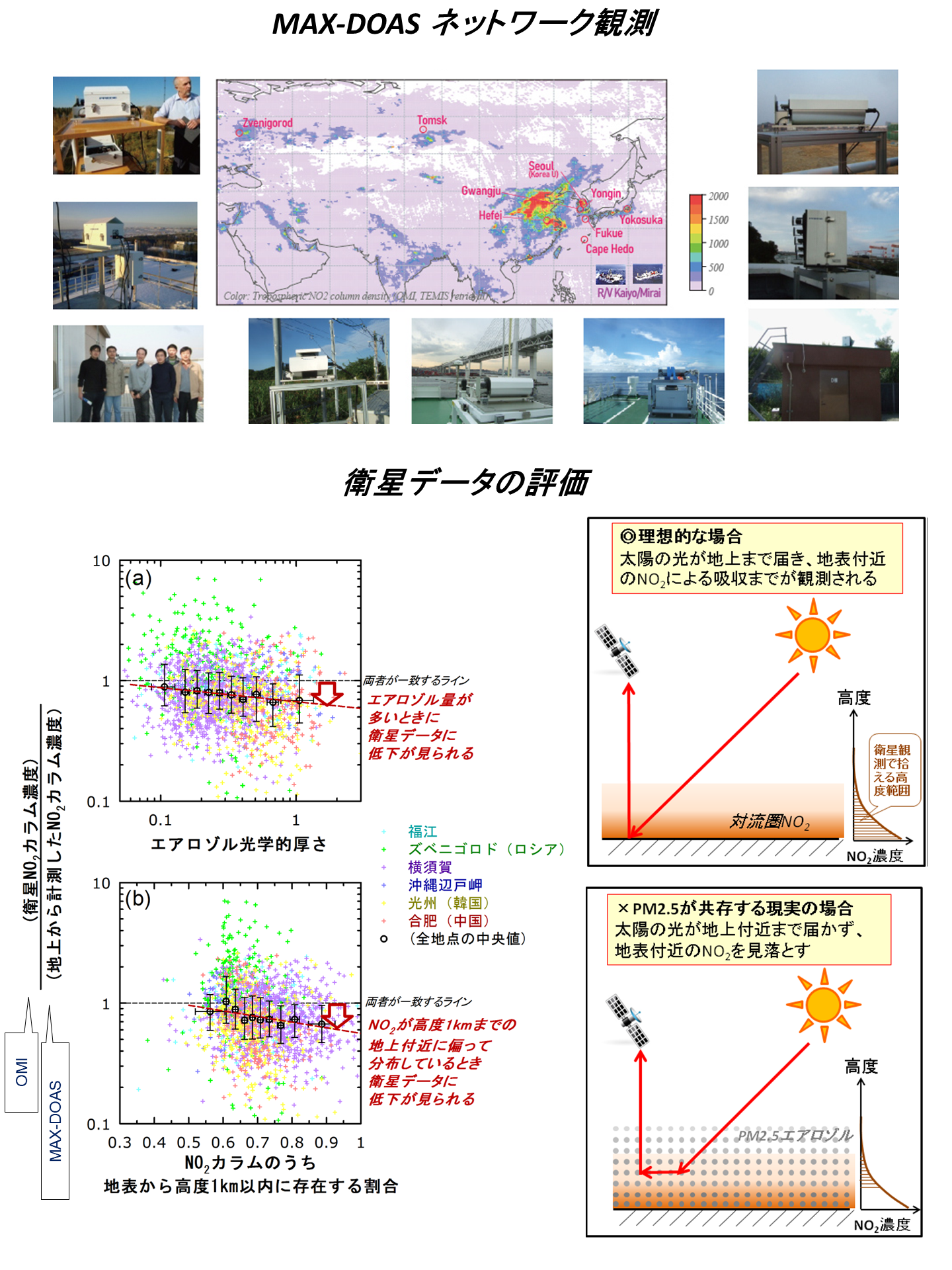2. MAX-DOAS観測網展開と衛星観測
我々は、地上や船上から複数の仰角で太陽からの散乱光(紫外可視の波長域)を計測し、NO2やホルムアルデヒド、エアロゾルの鉛直分布やカラム濃度を導出できる、小型軽量な「MAX-DOAS装置」を開発してきました。装置は日本・韓国・中国・ロシアへネットワーク展開し、また船での観測も実施しています。より詳細な情報や数値データは別のページ(link)をご覧ください。2007年から現在までの長期データは世界的にもユニークなもので、OMI(Ozone Monitoring Instrument), TROPOMI(Tropospheric Monitoring Instrument), GEMS(Geostationary Environment Monitoring Spectrometer)などの衛星観測の検証などに使われています。我々の検証結果では、衛星観測から導出された対流圏NO2カラム濃度には過小評価する傾向があり、とくにエアロゾルが放射伝達に影響する時や、NO2が地表付近に偏在しているときに顕著となることが示されています。関連して、我々は従来の衛星観測と比較して50-100倍の空間解像度(1km四方など)での大気汚染計測を提案してきましたが、GOSAT-GW(温室効果ガス・水循環観測技術衛星)として実現しつつあります。CO2やメタンとともに「個別の発生源の識別」や、「非線形のオゾン生成化学過程の追究」が可能になると見込まれています。

もっと知りたい方へ
- 2014年8月に行ったプレスリリース
- Choi, Y. et al. (2023). Changes in Tropospheric Nitrogen Dioxide Vertical Column Densities over Japan and Korea during the COVID-19 Using Pandora and MAX-DOAS. Aerosol Air Qual. Res. 23, 220145.
- Choi, Y. et al. (2021). Long-term variation in the tropospheric nitrogen dioxide vertical column density over Korea and Japan from the MAX-DOAS network, 2007-2017. Remote Sens. 13, 1937.
- Kanaya, Y. et al. (2014), Long-term MAX-DOAS network observations of NO2 in Russia and Asia (MADRAS) during 2007–2012: instrumentation, elucidation of climatology, and comparisons with OMI satellite observations and global model simulations, Atmos. Chem. Phys., 14, 7909-7927.
- Irie, H. et al. (2008), First retrieval of tropospheric aerosol profiles using MAX-DOAS and comparison with lidar and sky radiometer measurements, Atmos. Chem. Phys., 8, 341-350.
- Takashima, H. et al. (2009): Atmospheric aerosol variations at Okinawa Island in Japan observed by MAX-DOAS using a new cloud-screening method, J. Geophys. Res., 114, D18213